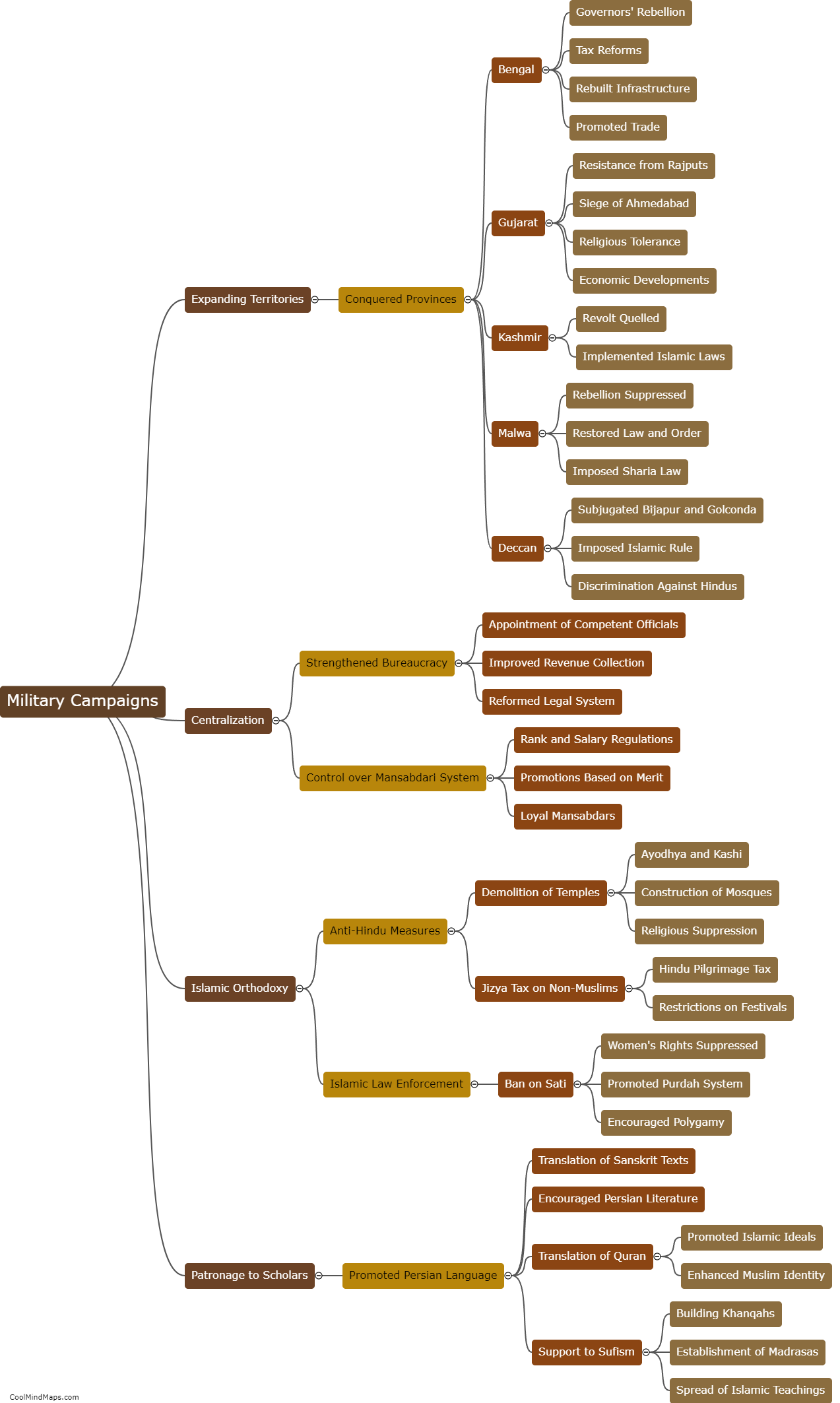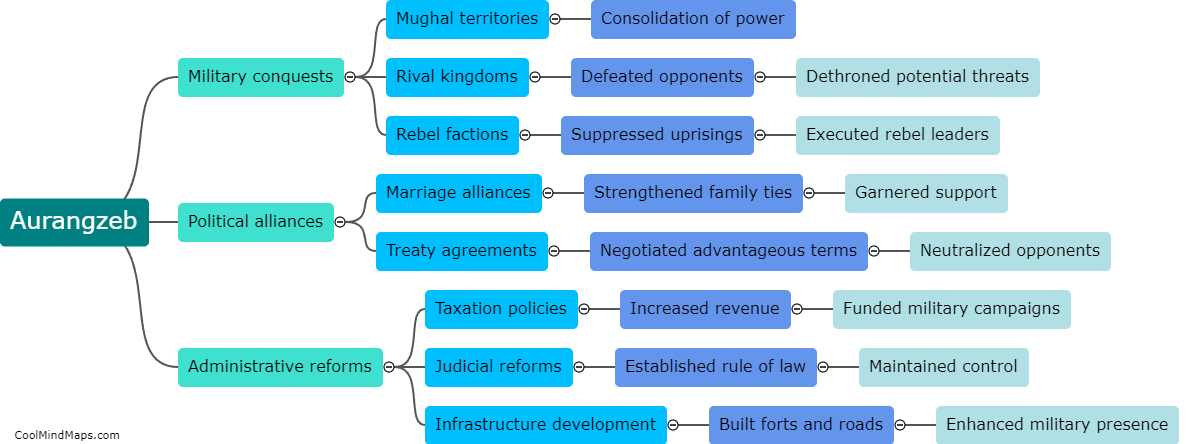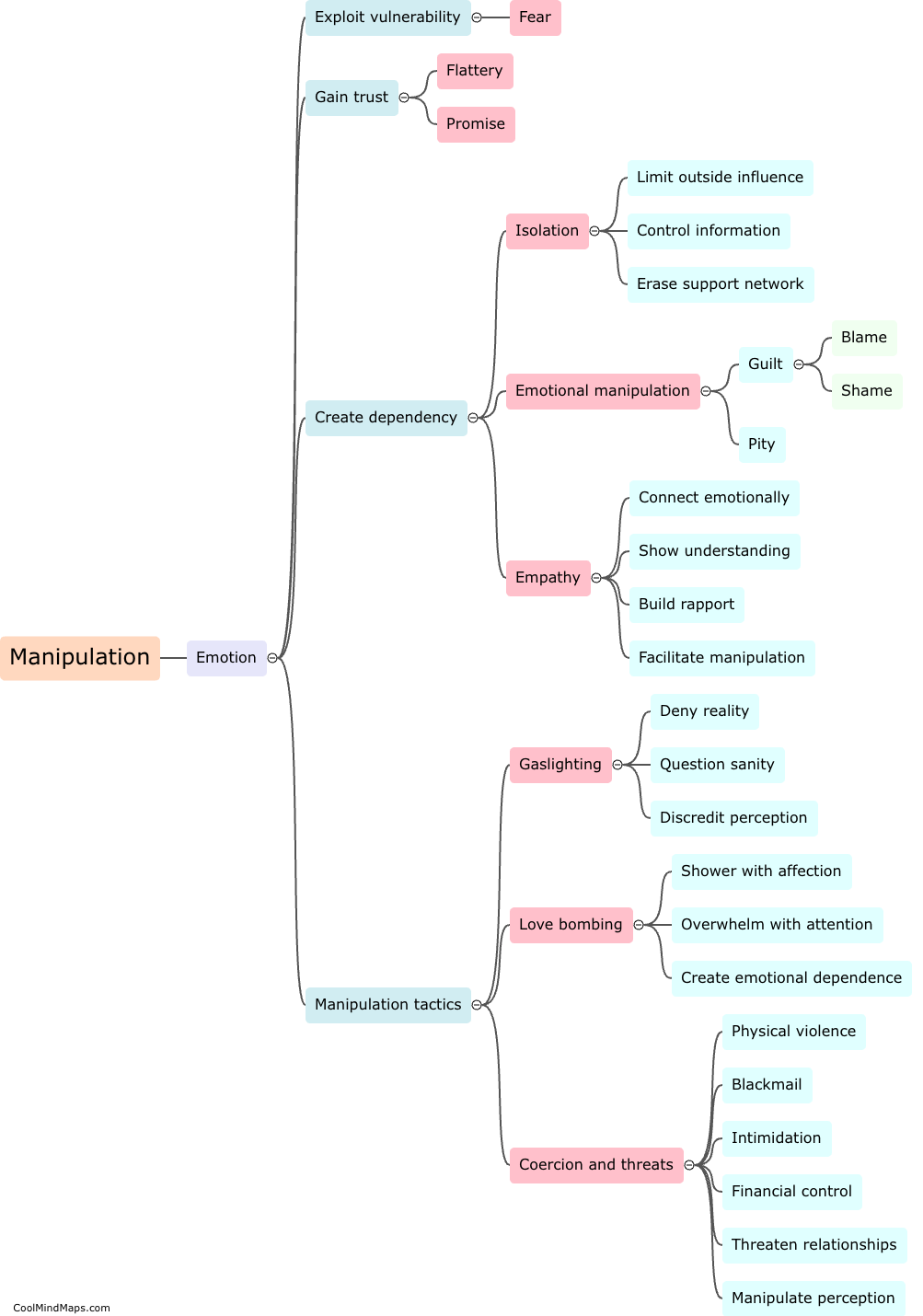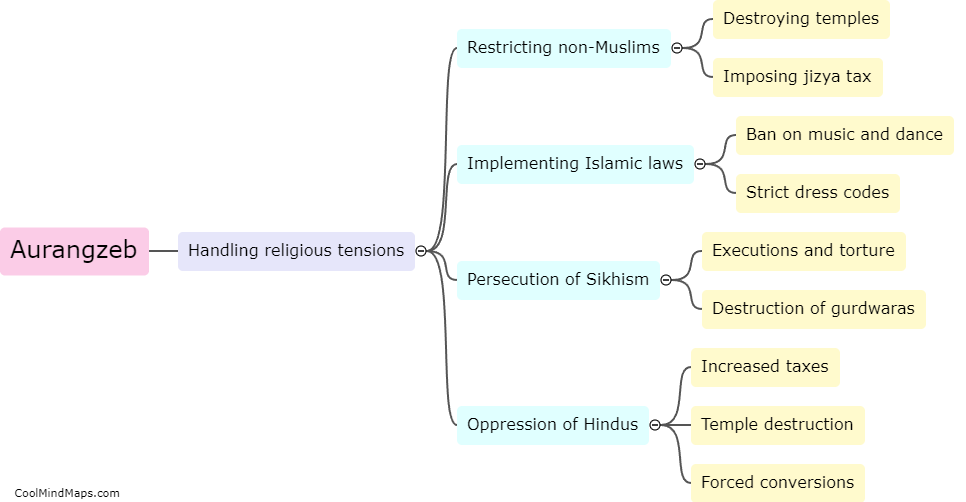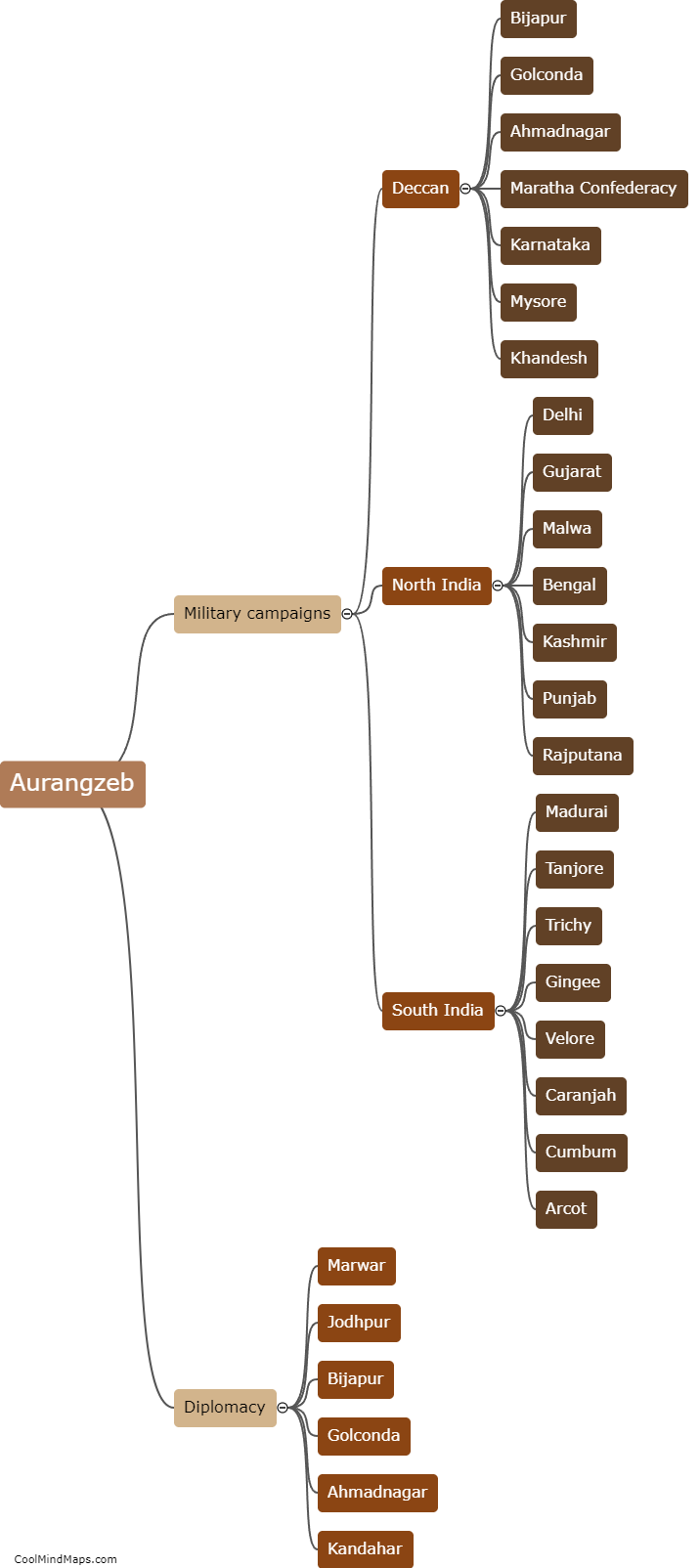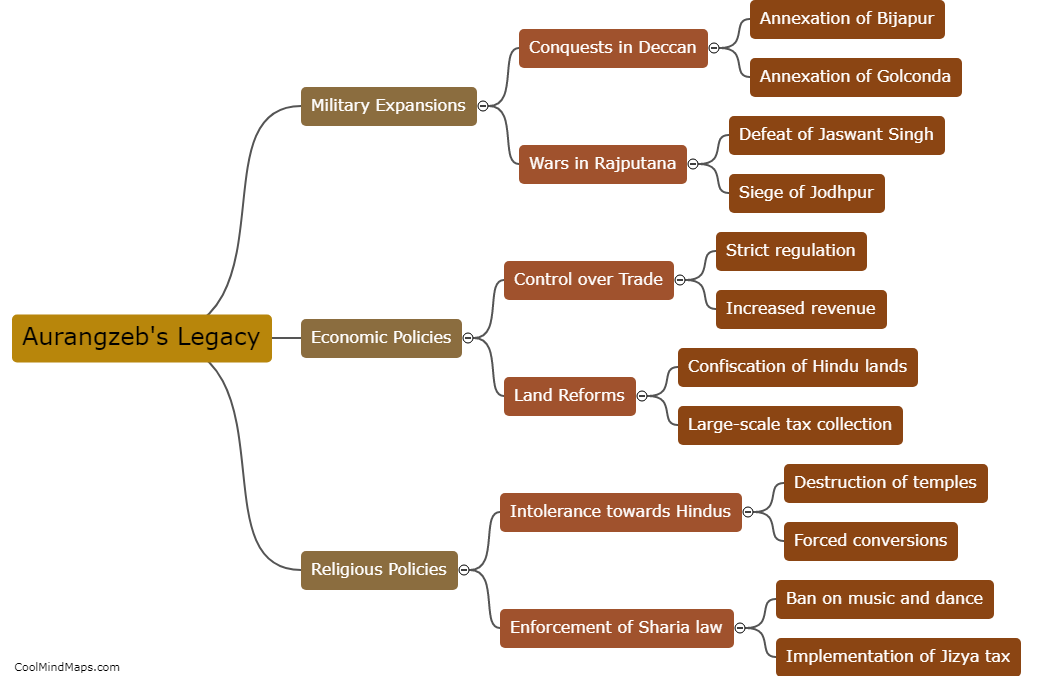What were Aurangzeb's main policies?
Aurangzeb, the sixth Mughal emperor of India, implemented several key policies during his reign from 1658 to 1707. His main policies can be broadly categorized into religious, administrative, and military reforms. On the religious front, Aurangzeb pursued a policy of stricter adherence to Sunni Islam, which led to the destruction of Hindu temples, imposition of jizya tax on non-Muslims, and the banning of certain cultural practices. Administratively, he sought to centralize power by tightening control over provincial governors and reducing corruption in the bureaucracy. Aurangzeb also expanded the empire's military campaigns, aiming to consolidate Mughal rule and expand territory. Despite these policies, Aurangzeb's reign is often criticized for its intolerance and religious oppression, as it resulted in increased tensions between Muslims and Hindus and ultimately contributed to the decline of the Mughal Empire.
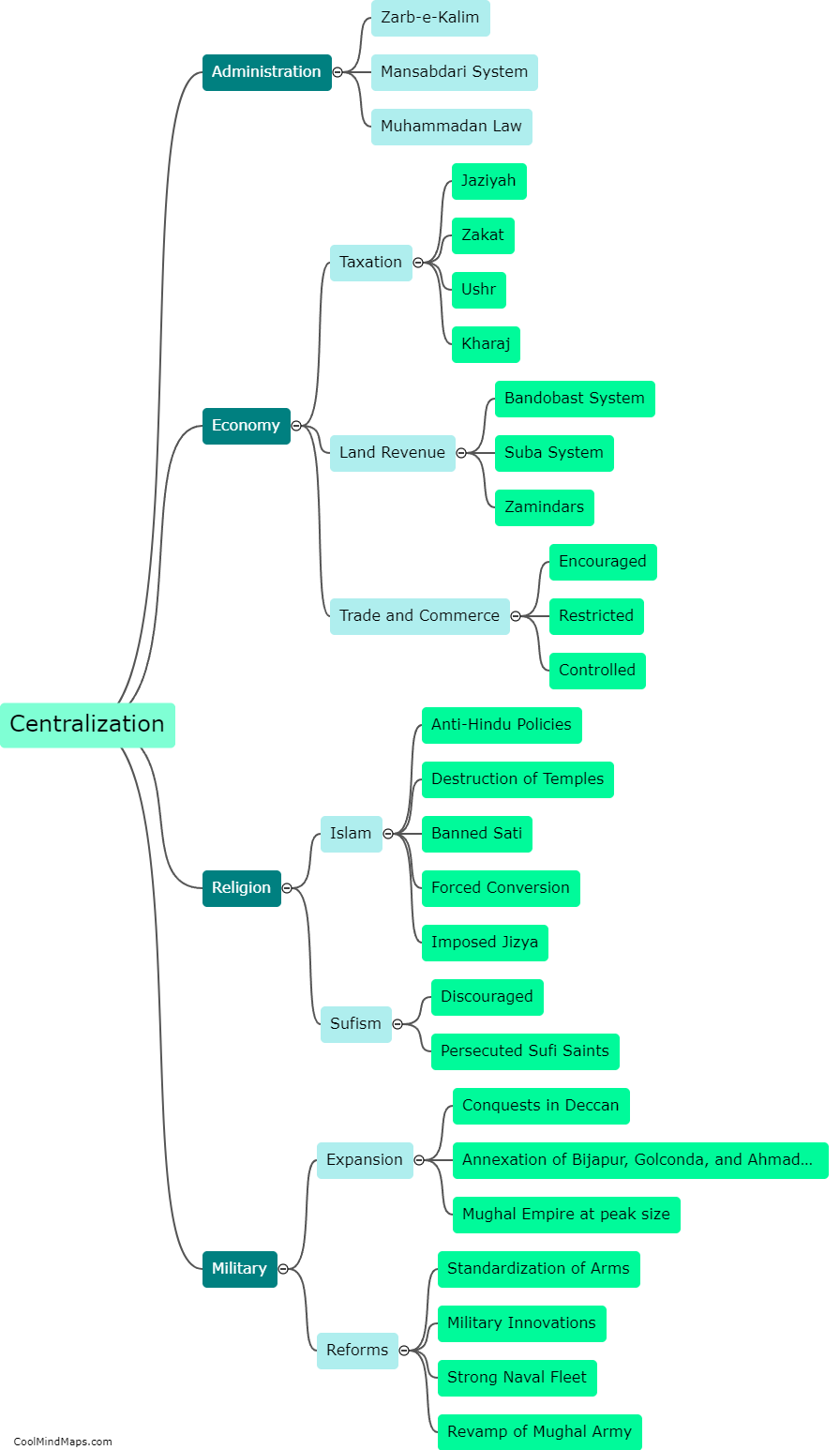
This mind map was published on 16 August 2023 and has been viewed 91 times.




